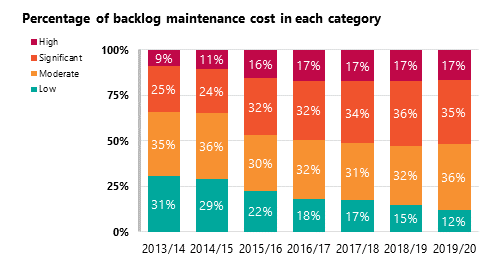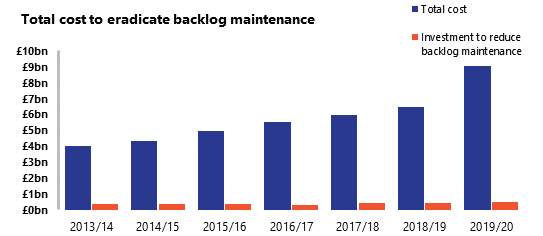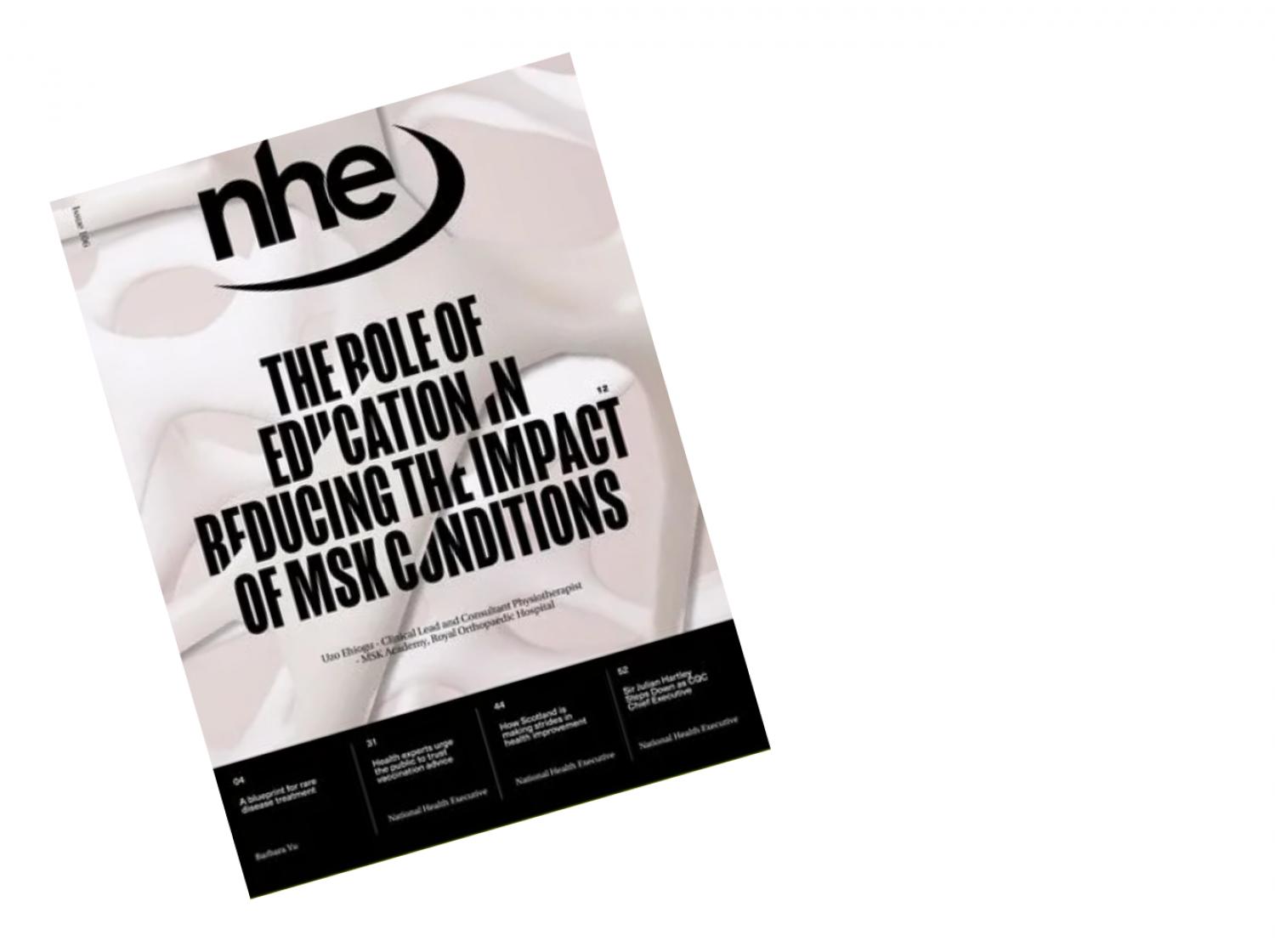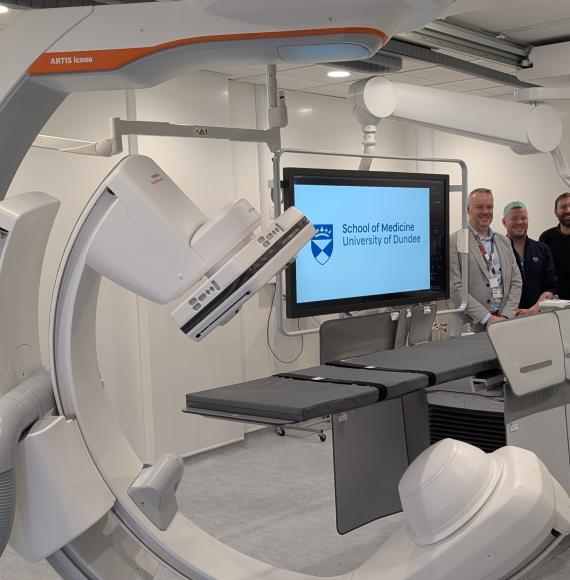Investment in NHS capital funding is critical to safety, care quality and efficient use of the NHS estate, equipment and wider resources. This has become increasingly clear during the pandemic when trusts with old and outdated estates, and equipment, found it more difficult to reconfigure old sites to accommodate social distancing and infection, prevention and control.
Yet the latest release of the estates return information collection (ERIC) data from NHS Digital shows there has been a substantial deterioration in the NHS estate. Covering 2019/20, the figures give us the most accurate picture of capital investment across the service, highlighting the tremendous pressure facing the provider sector’s infrastructure.
Trusts began the 2019/20 financial year having been asked by NHS England and NHS Improvement to scale back their capital spending plans.
Their initial assumptions, driven by an increasingly urgent need to carry out essential maintenance and repair works, would have risked exceeding the overall spending provided for under the Department of Health and Social Care’s capital departmental expenditure limit (CDEL).
Later that year, an additional welcome £1bn was added into the CDEL to boost NHS capital spend, allowing existing upgrades to proceed and tackling the most vital infrastructure projects.
However, the ERIC figures show that even with this additional capital injection, trusts’ estates have still deteriorated significantly.
The maintenance backlog
The cost of bringing deteriorating assets back to a suitable working condition – known as the maintenance backlog – continues to rise. In 2019/20 the backlog was £9bn. This represents a 40% increase from the 2018/19 figure which stood at £6.46bn, and double the level seen five years ago.
The backlog is also now roughly equivalent to the annual cost of running the entire NHS estate, which in 2019/20 cost £9.7bn, and nearly double the NHS’s £4.9bn share of the CDEL in that year. Moreover, over half of the total outstanding capital maintenance is constituted as ‘high’ or ‘significant risk’. This is effectively unchanged on 2018/19 (as Fig. 1 shows).

Fig. 1
These figures point towards a clear escalation of risk which is jeopardising patient safety. In 2019/20, the number of clinical service incidents rose by 23% compared to 2018/19. Clinical service incidents caused by estates and infrastructure failure have risen in each of the past three years. Indeed, 45% of trust leaders surveyed by NHS Providers last year said their estate was in poor or very poor condition.
So, why is this backlog figure so high?
The data shows that parts of the NHS estate are deteriorating faster than trusts can invest to maintain it. In 2019/20, while £516m was spent by trusts on addressing these urgent maintenance works, the total backlog grew by five times this amount (as fig. 2 highlights). Part of the increase may be explained because of the inclusion of issues relating to reinforced autoclaved aerated concrete (RAAC) planks, used for building fabrications between the 1960s and 1980s.

Fig. 2
At the same time, 2019/20 was a period in which the government made welcome announcements for planned capital spend. During 2020 one-off allocations were awarded to trusts in need of urgent repairs – for example £850m was made available to upgrade outdated facilities and equipment.
However, we will have to wait until the release of the 2020/21 ERIC dataset to see precisely how these capital injections have filtered down into the system.
Looking to the future
In 2021/22, the NHS capital budget has been increased to begin work on new hospital building, hospital upgrades, and to replace old diagnostic equipment and to make further progress on mental health inpatient facilities. This will result in many outdated and inadequate facilities being replaced, and will reduce the backlog for trusts that receive funding
Yet, while this is welcome, it is clear that the backlog is a systemic problem that requires a strategic response with sufficient funding to upgrade facilities across ambulance, community and mental health settings as well as further investment for acute hospitals. The growth of the maintenance backlog reaffirms the need to create a capital allocation system that recognises that trusts need to be able to access capital, and have the freedom to spend it in a timely way.
It will always be appropriate for strategic projects to be signed off nationally. And it is reasonable for systems to collectively make decisions about capital works large enough to affect systems’ plans and capital allocations. But individual organisations should have delegated authority to proceed with backlog maintenance and other small-scale works: where they do not have this freedom, investment will be delayed unnecessarily, to the detriment of efficiency, productivity and patient safety.
The condition of the NHS estate has made responding to the Covid-19 pandemic more difficult. Trusts operating with old estates have managed under incredibly challenging circumstances to reconfigure their facilities to ensure adherence to infection control measures – but trusts with older estates report it has been more challenging to scale up capacity and convert facilities.
It is clear that trusts will need to spend more to address urgent repairs. The outstanding maintenance costs will continue to rise - heightening the risk to patient safety - unless the eradication of the backlog is prioritised and there is a major increase in the amount of capital expenditure available to all trust types, and dedicated to maintenance and repair.



















